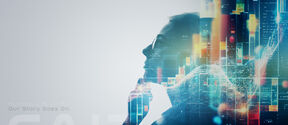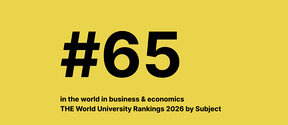Valuable waste

Solid waste from households and industry is generally disposed of by incineration, which also produces energy. If the disposable waste contains metals, they end up in the by-products created during the incineration process: bottom ash and fly ash. Bottom ash is the heaviest ash fraction that accumulates at the bottom of the cauldron. Fly ash is a type of material that consists of very small particles that are filtered from furnace gas.
Waste incineration is becoming increasingly prevalent, and this has also increased the amount of by-products that are created during the incineration process. However, these by-products are not widely utilised, which has caused an increase in the amount of metal that is wasted.
The Circular Metal Ecosystem (CMEco) project, which ran between 2017 and 2018 (and will continue until the end of April 2019 at Aalto), focused on how valuable metals could be collected from unutilised material side flows. In addition, the project also aimed to support the material and energy efficiency of the processes used in metal production and thus improve the competitiveness of Finnish industry as well as the environmental friendliness of its activities and products in connection with the metal recovery process.
The Journal of Material Cycles and Waste Management recently published a study by the CMEco project that focused on the use of different solvent for the dissolution of metals from the fly ash that is generated during the waste incineration process.
The studied fly ash was hazardous waste that contained heavy metals, lead, cadmium and mercury. Its disposal is challenging and expensive, as its environmental contamination risk requires that it be disposed of at a landfill suitable for hazardous waste. This process also results in the loss of significant amounts of valuable metals.
No iron, please − the search for a selective solvent
The study searched for a solvent that could be used to dissolve both heavy and valuable metals from fly ash, but no iron. If a selective dissolution process could prevent any iron from being dissolved and keep it in the leach residue, the production costs of these hydrometallurgical processes would decrease, as expensive solution cleaning methods and chemicals are needed to remove any dissolved iron.
The study found that mineral acids, i.e. hydrochloric and sulphuric acid, were the best at dissolving the studied metals – but they also dissolved iron. However, the researchers discovered an solution: the hydrochloric acid was diluted to such a pH level that it could dissolve other metals but not iron. Another potential solvent that could dissolve lead is ethaline. Its possibilities must be studied further, as it was only studied for the first time in connection with the dissolution of metals from fly ash.
Increasing amounts of metals are required especially for the production of lithium-ion batteries, which are used in for example consumer electronics and electric cars. This is why the collection of even the smallest amounts of metal concentrations from metal waste remains vital for the promotion of the circular economy for metals.
The research institutions involved in the CMEco project (Aalto, LUT, GTK, VTT) operated in collaboration with several corporations (Outotec, Boliden Kokkola, Boliden Harjavalta, Fortum, Norilsk Nickel, Outokumpu, Magsort, Akkuser, Alfamat, Aquaminerals, Timegete Instruments). The active phase of the project was between 2017 and 2018, and the project continues at Aalto until the end of April 2019. The study that was recently published was supported by CMEco as well as Fortum Oyj and Clic Innovation Oy.
A study on selective leaching of heavy metals vs. iron from fly ash
Elomaa, H., Seisko, S., Lehtola, J. et al. J Mater Cycles Waste Manag (2019)
https://doi.org/10.1007/s10163-019-00858-w
Further information:
Mari Lundström
Assistant Professor, Aalto University
mari.lundstrom@aalto.fi
+358 40 487 3434
Read more news

Finnish AI Region Secures Second Term with Top Marks from EU
Finnish AI Region (FAIR) EDIH has been selected to continue operations for a second term with excellent ratings. European Union continuation funding enables service expansion from the beginning of 2026. Aalto University is one of 10 partners in FAIR.
Business & economics and computer science ranked in top 100 globally
The Times Higher Education ranking measures universities with 18 indicators, including international research and citations
Unite! Seed Fund 2026: Open for applications
The 2026 Unite! Seed Fund call is officially open, offering funding across three strategic lines: Student Activities, Teaching and Learning, and Research and PhD. Deadline for applications is 20 March 2026.






